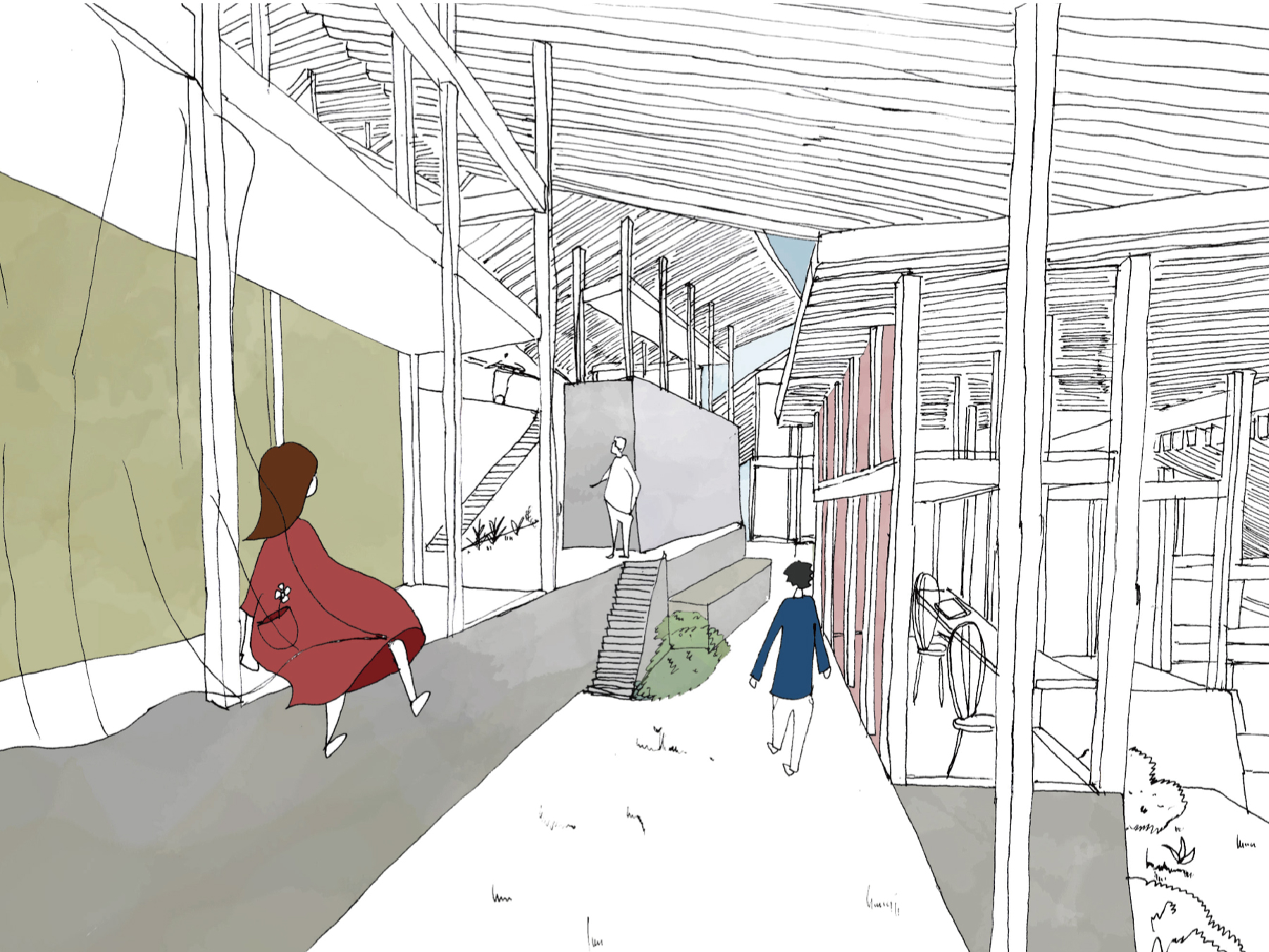
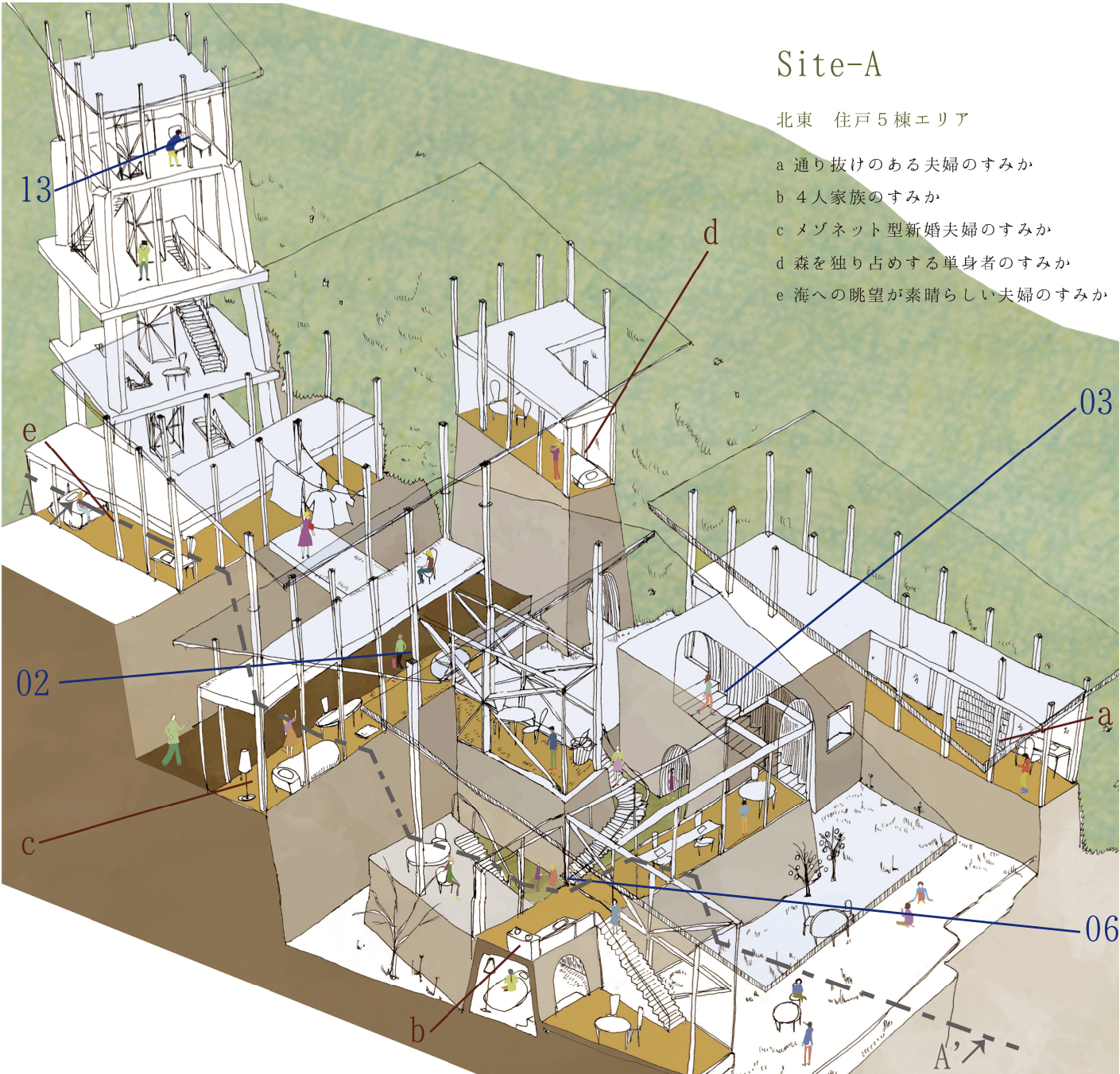

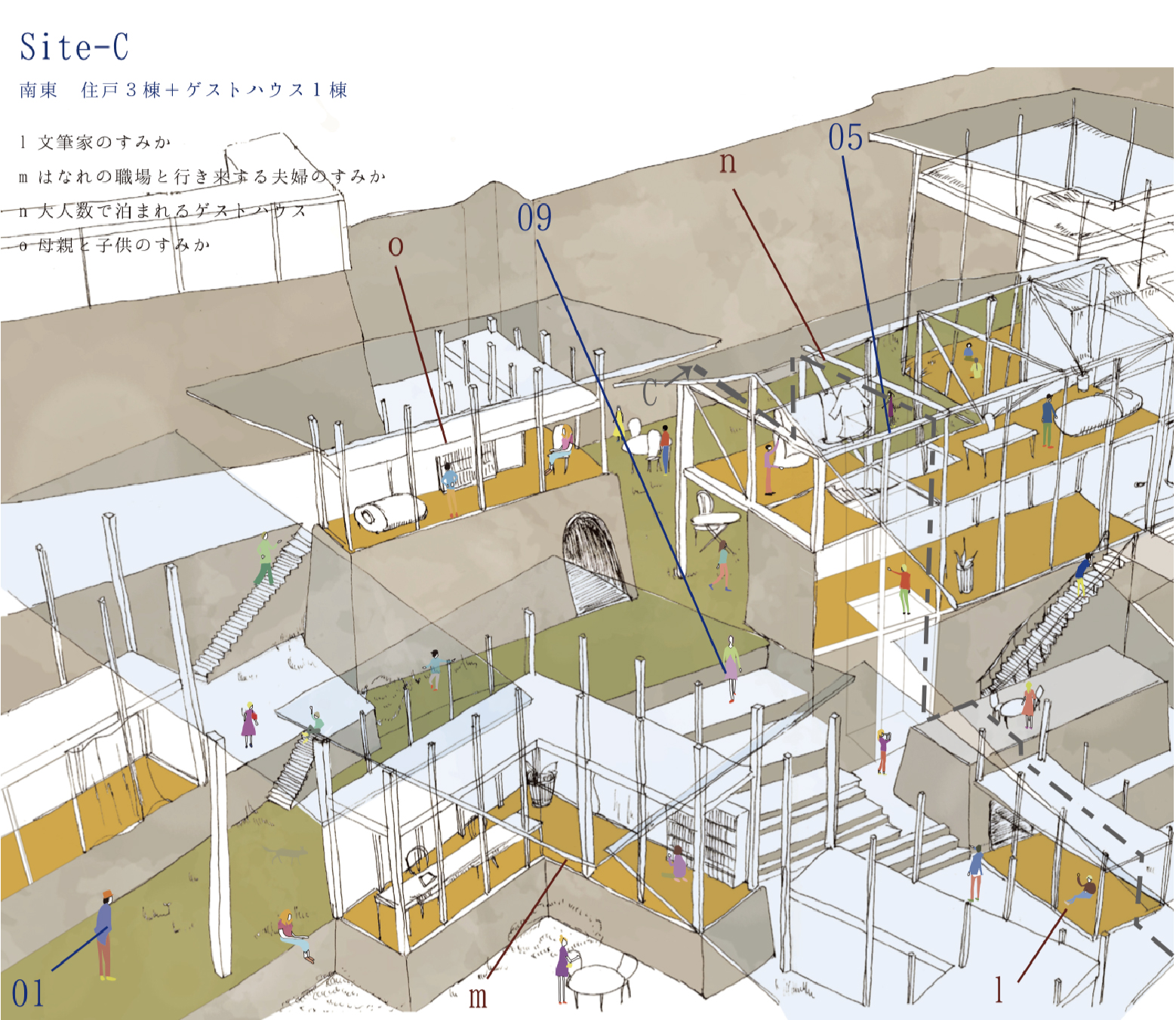
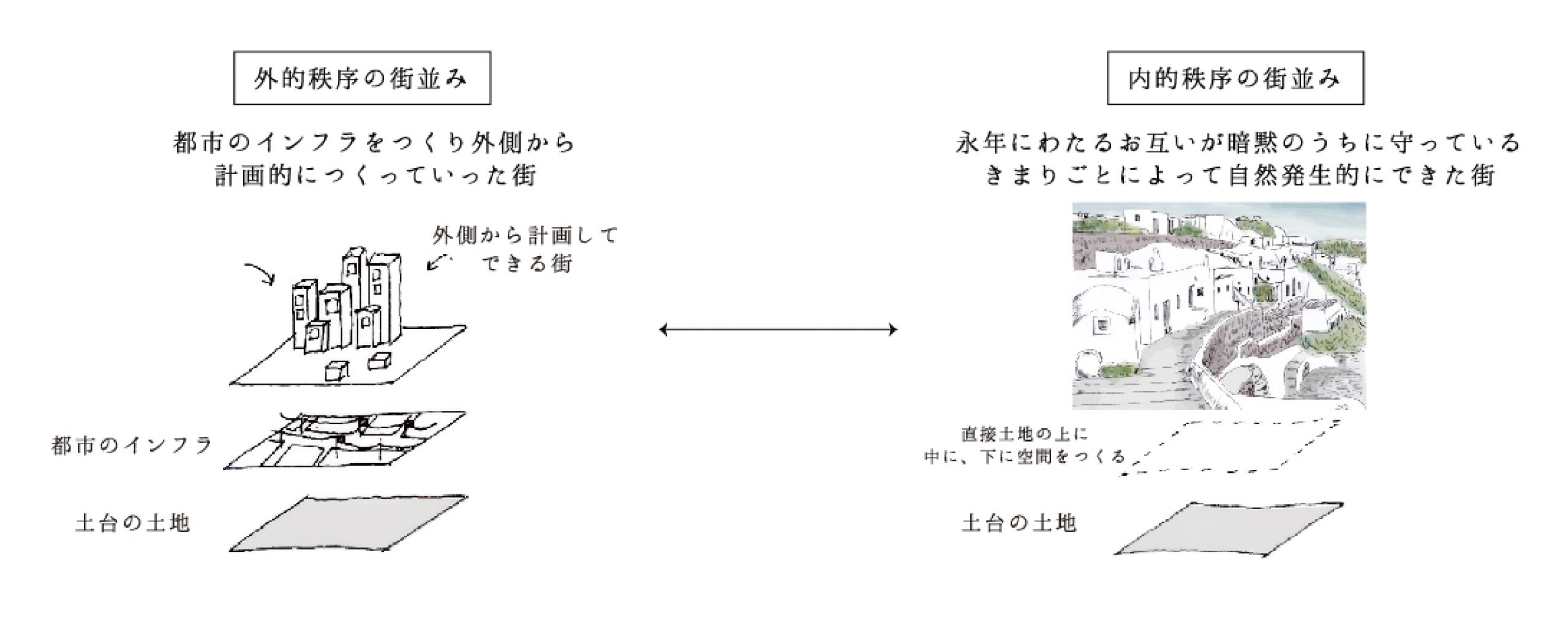
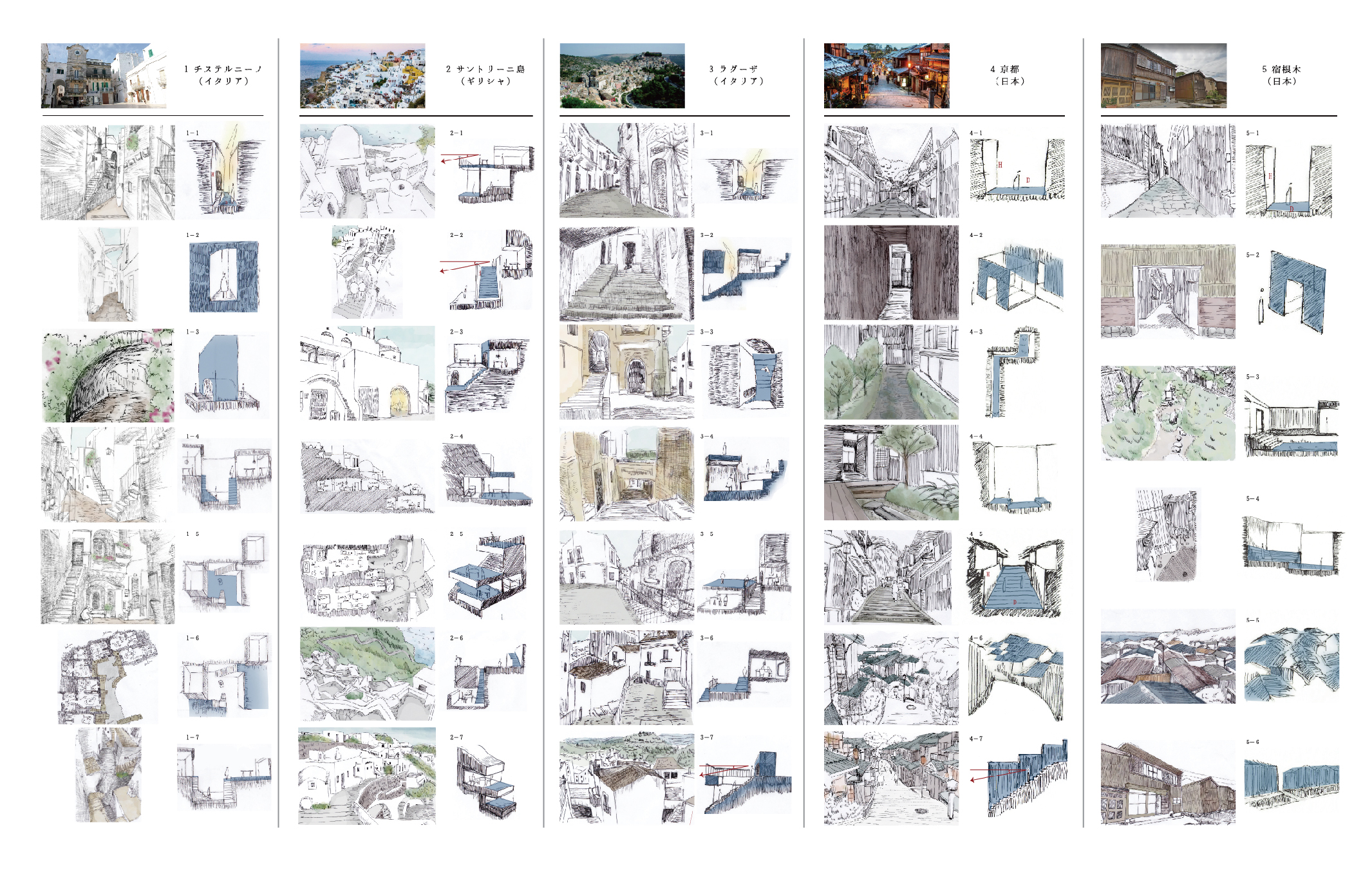
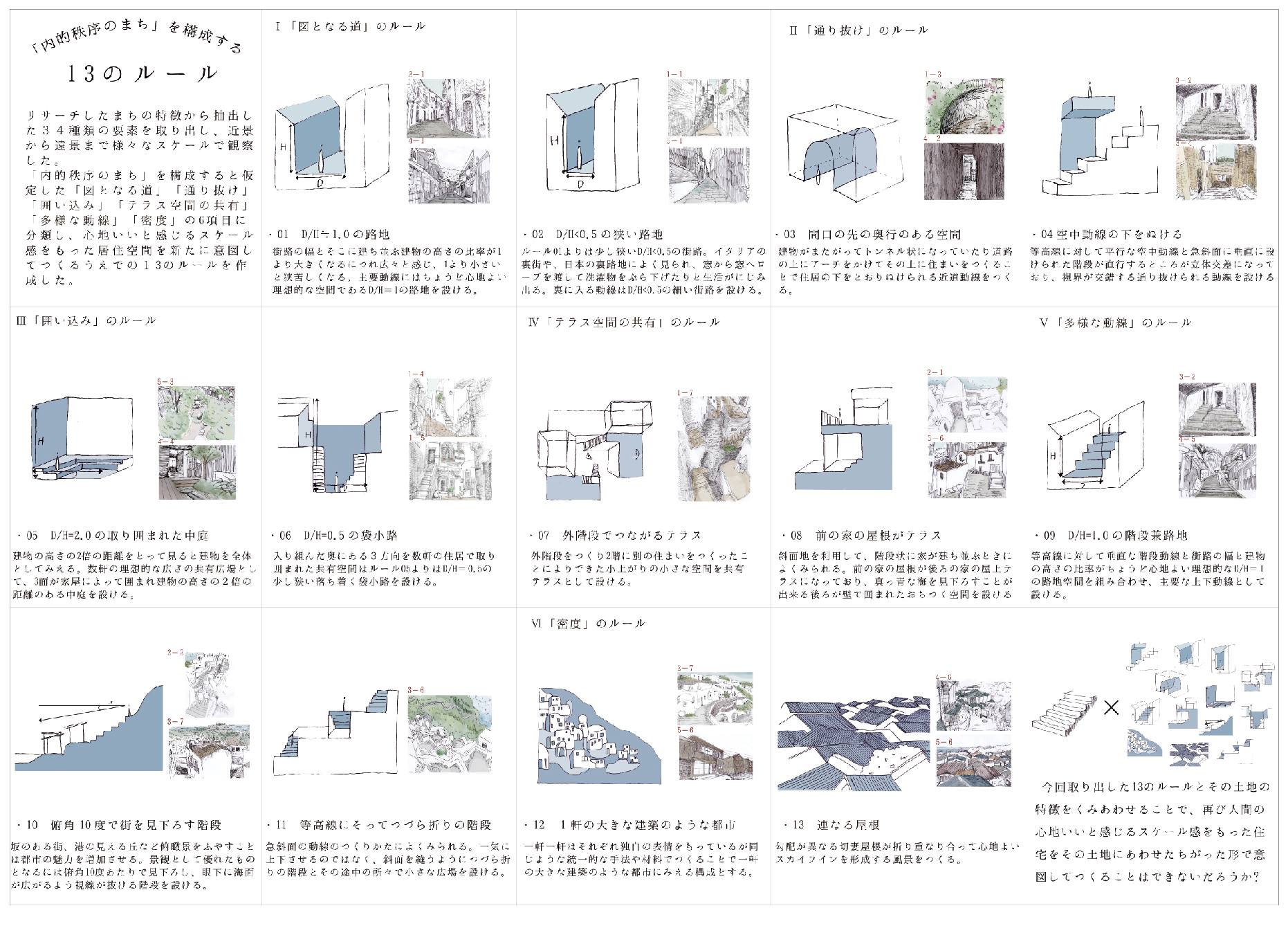
Shaping the implicate order of a village: Designing a community using a principle drawn from unintentionally designed attractive spaces
日本 / japan
中野紗希 / NAKANO Saki
我生活在公共住宅。有一天,我對於周圍無機的城市環境是否是一個能满足生活樂趣的空間產生了疑惑。在芦原義信氏”街道的美學”中他將那些通過建立城市基礎設施從外部規劃的城市稱為 “外部秩序 “的城市,而那些由内部因素自然形成的城市被稱為 “内部秩序 “的城市。
通過不同的視角觀察擁有不同內部秩序的世界的各種街道,導出街道構成的規則,
是否就能創造出新的、有意識的、感到舒適的尺度感的居住空間呢?
私は公団住宅で暮らしている。ある日ふと、私をとりまく無機質な都市環境は住まうことの快楽を満たす空間であるのかと疑問に感じた。芦原義信氏は著書「街並みの美学」において都市のインフラストラクチャーをつくり外側から計画的につくっていった街を「外的秩序」の街と呼ぶのに対し内部の要因から自然発生的にできた街を「内的秩序」の街と呼んだ。
一見すると違って見える内的秩序を持った街並みを様々な視点から観察し、構成するルールを導くことで心地いいと感じるスケール感をもった居住空間を新たに意図してつくることはできないだろうか。
I live in a public housing complex. I found myself wondering if the inorganic urban environment surrounding me was a space that would satisfy the pleasure of living. In his book, “The Aesthetic Townscape,” Yoshinobu Ashihara refers to cities that have been planned from the outside by creating urban infrastructure as “externally ordered” cities, while cities that have been created spontaneously from internal factors are called “internally ordered” cities. By observing from various perspectives the cityscapes of the world that have an implicate order, can we create intentional living spaces with a sense of scale that we find comfortable?
More Projects of this Session
展區其他作品